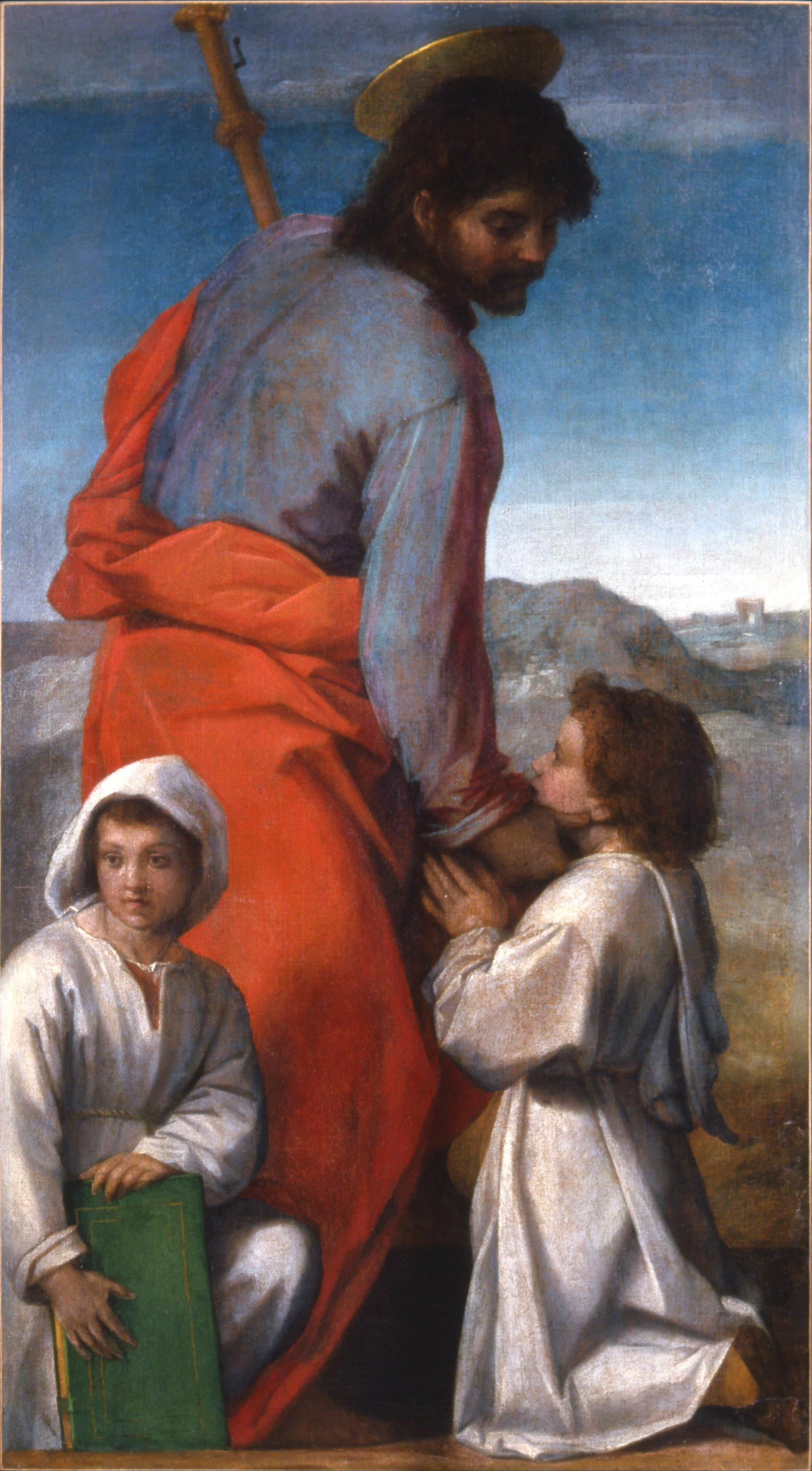Standard of Saint James
Andrea d'Agnolo, known as Andrea del Sarto (Firenze 1486 – 1530)
St James, with his back slightly turned, and clothed in a blue robe and red cloak, can be recognised from the “bordone”, the long stick used by pilgrims. Having stopped walking for a moment, he is tenderly caressing a kneeling boy. The other boy on the left of the painting, is looking towards his right and holding a green book in his hands, a reference to the rules of the fellowship to which they belong. The children are wearing the white robes of the Compagnia del Nicchio (the shell, attributed to St James), a confraternity with headquarters at the Spedale degli Innocenti. Some sources believe that Del Sarto had been a member of the Compagnia, the recipient of the painting. The scene is constructed to recreate the simple clarity of a moment in everyday life: it does not feature many other details, except the sparse landscape behind the subjects. This particular aspect of del Sarto’s art, the ability to transfer a holy image to an everyday, domestic setting, became a source of inspiration for the Florentine painters of subsequent generations, who tirelessly followed the example of the artist that Vasari had defined as “the Faultless Painter”.
